
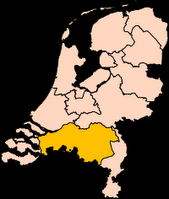 The first one was to Brabant (North Brabant, is in the south of the Netherlands) for the Carnival (CARNAVAL as they put it). Actually, first to Tilburg (town), and then to Hilvarenbeek (village). The smaller it got, the better it became...
The first one was to Brabant (North Brabant, is in the south of the Netherlands) for the Carnival (CARNAVAL as they put it). Actually, first to Tilburg (town), and then to Hilvarenbeek (village). The smaller it got, the better it became...Wiki enlightens us again:
“In the Netherlands where it iscalled 'Karnaval', 'Carnaval', 'Vastenavond' or 'Vastelaovend' the last day of Carnival, the day before Ash Wednesday, is held exactly 40 days (not counting Sundays) before Easter. Dutch Carnival is most celebrated in Catholic regions, mostly the southern provinces Noord Brabant and Limburg, where it is also known as Vastenavond or Vastelaovend (literally "Fasting evening", although that strictly refers only to the last day, whereas Carnaval in the Netherlands usually
begins on the Saturday before Ash Wednesday). The most popular places where Carnival is held (although every city, town or village celebrates it) are Maastricht, Roermond, Venlo, 's-Hertogenbosch, Bergen op Zoom and Breda. Carnival here has been celebrated ever since mediaeval times and was modernised after WW II, when Bergen op Zoom even continued to celebrate it indoors. However, it is the most southern province of The Netherlands, Limburg, where many Dutch go to celebrate i
t. During the event, every town is one big party.
During Dutch Carnival, many traditions are kept alive, first of all the parade with dressed-up groups, musicians and elaborate build show-vehicles, a fake prince plus cortège ('Council of 11'), the boerenbruiloft (farmer's wedding) and the haring happen (eating herring) at Ash Wednesday but the traditions vary from town to town.There are three types of Carnival celebrated in The Netherlands. The best known variant is known as the Rijnlandsche Carnival and it shares many folklore traditions with its German and Belgian counterparts. Maastricht is famous not so much for its parades but for its street carnival, with elaborate costumes that people work on all year, a bit like the South American style, but with a strong accent on humour, and not unlike Italian, mostly Venician, traditions, culture and costumes. The third variant can be found in 's-Hertogenbosch, Breda, Steenbergen and Bergen op Zoom. The Carnival in Den Bosch is known as the old
est in the Netherlands. Several paintings of the world famous Jheronimus Bosch, who lived in the city in the 15th century, are based on the carnival festivities in the city during the Middle Ages. The oldest known Carnival festivities in 's-Hertogenbosch date from 1385. In 1882 De Oeteldonksche Club was founded to secure the future of Carnival in 's-Hertogenbosch. The Carnival of Bergen op Zoom shares most traditions with 's Hertogenbosch and very few traditions and folklore with the rest of the Netherlands and they have celebrated it in their specific way ever since 1839.”
 First and foremost, to most my Dutch friends’ surprise, I had a great time (without getting really drunk). I did have to dress up, though, as a cat in an identity crisis (with Mickey Mouse ears), trying to assume I was making a political statement against bio-technology…
First and foremost, to most my Dutch friends’ surprise, I had a great time (without getting really drunk). I did have to dress up, though, as a cat in an identity crisis (with Mickey Mouse ears), trying to assume I was making a political statement against bio-technology…
As I was warned, the carnival indeed had drunken people and bad music. But that wasn’t all.  It was a fertile field of social observation particularly of middle class provincial Dutch life. Moreover, to my surprise, there was a rather ok band in one of the parties we have been to. The Theo Maassen song was cool, and it was not as translation proof as Harro suggested (lyrics and song url).
It was a fertile field of social observation particularly of middle class provincial Dutch life. Moreover, to my surprise, there was a rather ok band in one of the parties we have been to. The Theo Maassen song was cool, and it was not as translation proof as Harro suggested (lyrics and song url).
Moreover there were a lot of little details I could hardly imagine figuring out elsewhere. Those I cannot possibly list and describe... But here are some more significant observations (thanks to Eric’s endless efforts of interpretation).
 It's not hard to imagine that once upon a time, once every year, during carnival (before the hungry and cold days started) the feudal classes were being disregarded for a few days (i.e. the rules were off). You can see little bits of it in the comical Mass on Sunday morning, the policeman in pic, the whole process of the prince being given the keys to the city etc. I was told that in Limburg, people actually get dressed up so as not to get recognised, which demonstrates a similar idea.
It's not hard to imagine that once upon a time, once every year, during carnival (before the hungry and cold days started) the feudal classes were being disregarded for a few days (i.e. the rules were off). You can see little bits of it in the comical Mass on Sunday morning, the policeman in pic, the whole process of the prince being given the keys to the city etc. I was told that in Limburg, people actually get dressed up so as not to get recognised, which demonstrates a similar idea.
 The youth and how they are taking over the carnival was amazing. They had trucks of terribly drunk/drugged teenagers with hiphop and trance music shouting all over the town. It seems to be a change for not everyone looked very pleased about them, yet, I can imagine it was the case in their earlier years as well… (I particularly enjoyed the opportunity to dance without the necessity of making sense, which I thought was hard to find here.)
The youth and how they are taking over the carnival was amazing. They had trucks of terribly drunk/drugged teenagers with hiphop and trance music shouting all over the town. It seems to be a change for not everyone looked very pleased about them, yet, I can imagine it was the case in their earlier years as well… (I particularly enjoyed the opportunity to dance without the necessity of making sense, which I thought was hard to find here.)
I tried quite a few new brands of beer, and just because we were hanging around we were given a tour of the windmill and a very impressive 17th century brewery (unfortunately only in dutch but in great detail on their website).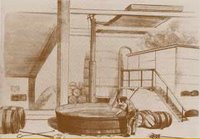
The brewery has its remarkable story of being opened and closed several times due to difficulties and it was a sweet little building, with a warm and old (in a good way) atmosphere. The best thing (other than the people inside),  was of course the beer itself...
was of course the beer itself...
The mill gave me the required height to see around (and it still amazes me everytime no notice how flat a country I live in...). It seems that in feudal times, millers were important actors for the taxation system. (“not the water  millers!”, we were warned… “They were only employees…” But the ones that made the flour, those were the important guys... There was a nice herb garden right outside the mill, and all around the place there were a lot of horses to talk to and space to bike around. This gave me the nature myth back. I love seeing horses. I just can’t stop being happy.
millers!”, we were warned… “They were only employees…” But the ones that made the flour, those were the important guys... There was a nice herb garden right outside the mill, and all around the place there were a lot of horses to talk to and space to bike around. This gave me the nature myth back. I love seeing horses. I just can’t stop being happy.
 The trip also gave me my small is beautiful myth back. I enjoy myself in small towns and villages. I wouldn’t live there, but that’s the tragedy of the modern age… It seems that such a small but “proper” place would be a natural choice for a lot of people who
The trip also gave me my small is beautiful myth back. I enjoy myself in small towns and villages. I wouldn’t live there, but that’s the tragedy of the modern age… It seems that such a small but “proper” place would be a natural choice for a lot of people who  immensely dislike metropolitans and yet feel that they need all possible access to highly technological artefacts. This seems a better solution to rapid urbanisation, than forgetting about and mystifying the village life (as we do in Turkey).
immensely dislike metropolitans and yet feel that they need all possible access to highly technological artefacts. This seems a better solution to rapid urbanisation, than forgetting about and mystifying the village life (as we do in Turkey).
Yet, it did have its own problems, of course…
The topping was the Gothic churches I had the chance to see… (one extra point for Catholics against Protestants again). The special prize goes to St. Petrus in Hilvarenbeek for obvious reasons.
Here is what a church architecture website says about it:
“A quick look at the the church of Hilvarenbeek immediately makes clear that this isn't a simple village church. In ca. 1150 a chapter was founded in Hilvarenbeek, which made the village an important centre of religious life. A previous church was replaced in the 14th century. The current church is the result of many changes to that one.
 The nave still largely dates from the 14th century while the choir dates from the first half of the 15th century. The transept is slightly younger, but was heightened between 1520 and 1527. For the walls of the choir and the northern transept-arm tuff was used as well as brick. The northern side-aisle was added in the 15th century and heightened in 1557, after which shares its roof with the nave. The southern side-aisle probably dates from the first quarter of the 16th century. Unlike the northern side-aisle this one is as heigh and wide as the nave.
The nave still largely dates from the 14th century while the choir dates from the first half of the 15th century. The transept is slightly younger, but was heightened between 1520 and 1527. For the walls of the choir and the northern transept-arm tuff was used as well as brick. The northern side-aisle was added in the 15th century and heightened in 1557, after which shares its roof with the nave. The southern side-aisle probably dates from the first quarter of the 16th century. Unlike the northern side-aisle this one is as heigh and wide as the nave.
 The tower is one of the prettiest examples of Campine Gothicism (see Gothicism). It was built in ca. 1450, after fire had destroyed its predecessor. The new tower was built several metres to the west, thus allowing for the nave to be lenthened with one trave. The distinctive spire was added between 1615 and 1621, after the old one had been struck by lightning.
The tower is one of the prettiest examples of Campine Gothicism (see Gothicism). It was built in ca. 1450, after fire had destroyed its predecessor. The new tower was built several metres to the west, thus allowing for the nave to be lenthened with one trave. The distinctive spire was added between 1615 and 1621, after the old one had been struck by lightning.
The Eighty Years-War made an end to Hilvarenbeek's golden age. The renewal of the spire was made during the Twelve Years-truce (1609-1621), but by 1636 Hilvarenbeek had fallen in the hands  of the protestants, who banned the catholic faith and took the big church for their own use in 1642. Four canons of the Hilvarenbeek chapter founded a new church near Rovert (now in Belgium), just over the border on territory that remained catholic, where they held services for the people from their former village. In 1671 a hidden church could be opened in Hilvarenbeek itself. In 1799 the St. Petrus was finally given back to the catholics. After repairs the church could be used again in 1801.”
of the protestants, who banned the catholic faith and took the big church for their own use in 1642. Four canons of the Hilvarenbeek chapter founded a new church near Rovert (now in Belgium), just over the border on territory that remained catholic, where they held services for the people from their former village. In 1671 a hidden church could be opened in Hilvarenbeek itself. In 1799 the St. Petrus was finally given back to the catholics. After repairs the church could be used again in 1801.”

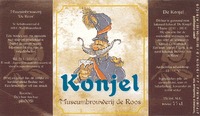
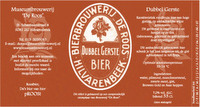

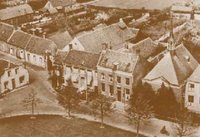


No comments:
Post a Comment